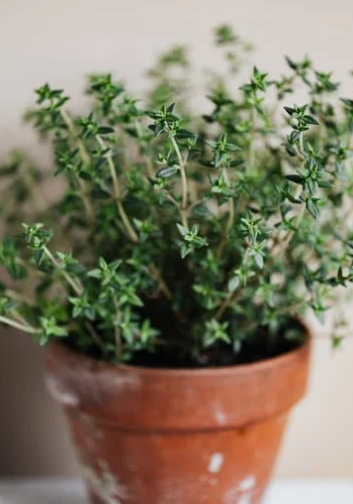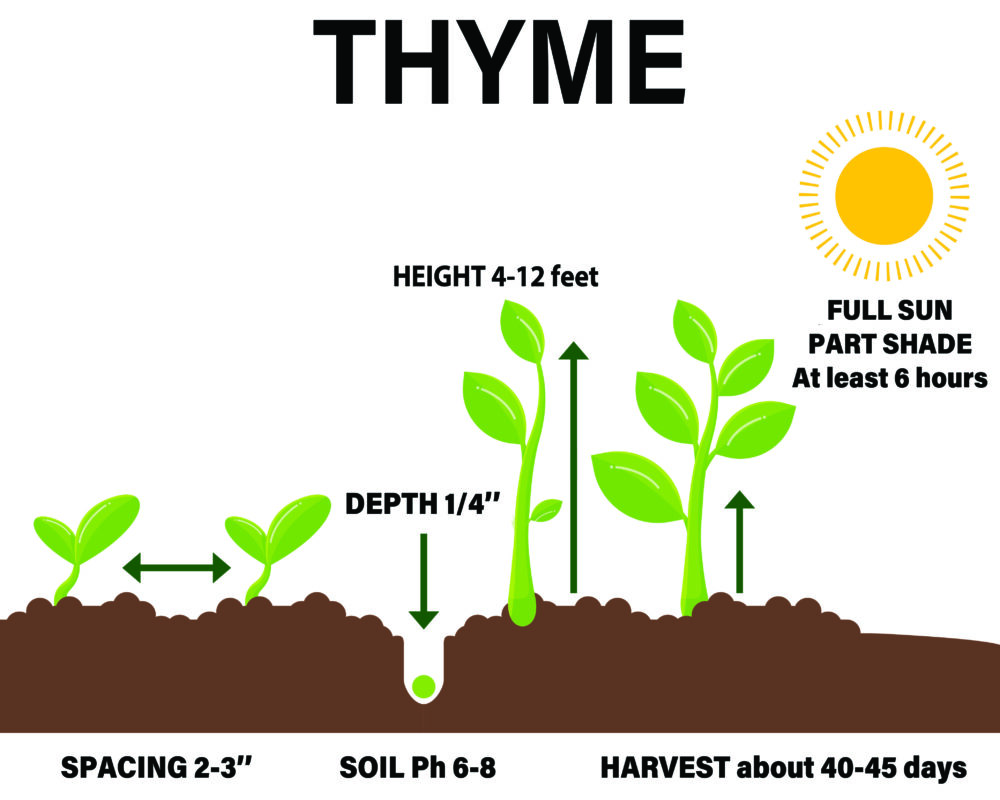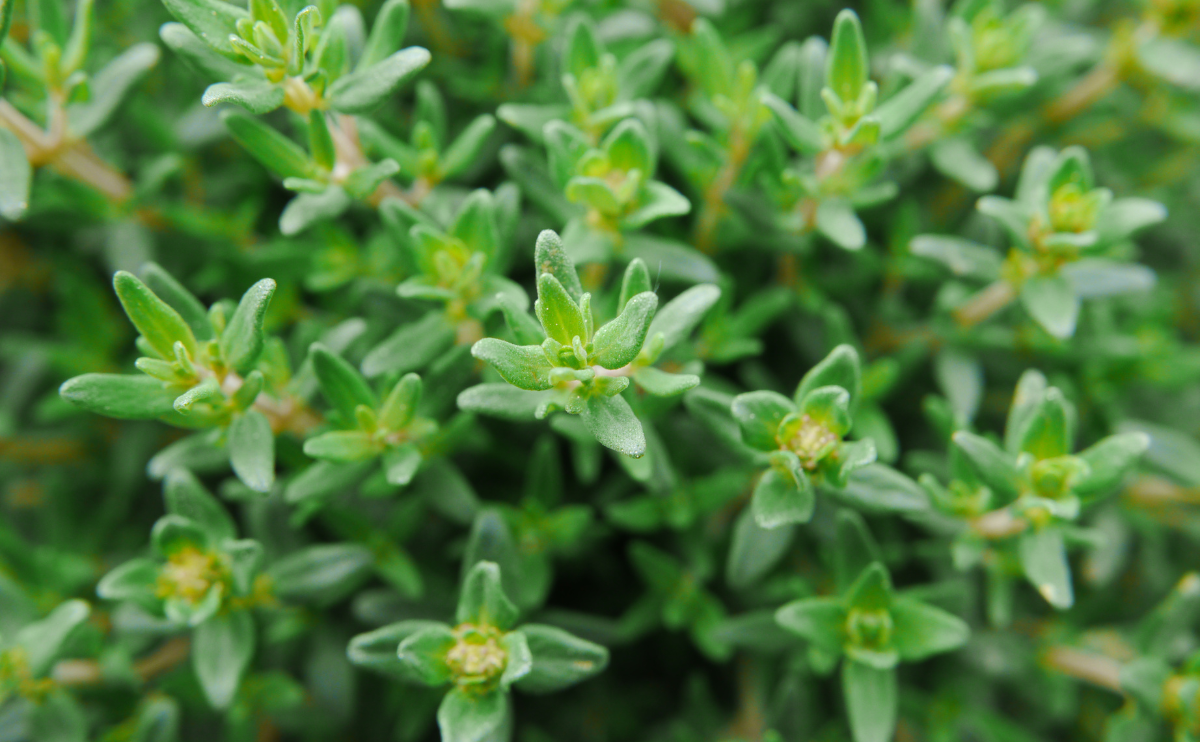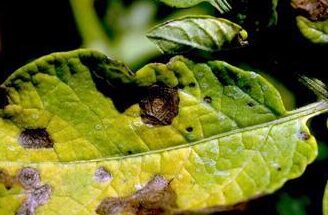Thyme (Thymus vulgaris) is a low-growing, woody perennial that performs especially well in somewhat dry, sunny conditions. A beloved Mediterranean herb, it holds its taste in cooking and blends well with other flavors of its native region, such as garlic, olive oil, and tomatoes.
The tiny pink, lavender, or white tubular flowers of thyme plants show up in the spring and summer months and are well-liked by bees. Its tiny gray-green leaves remain evergreen, and most thyme varieties can even be harvested in winter in the zones where it is a perennial.
Thyme can be planted at almost any time. It will mature enough to allow for harvest within a few months, then will reliably return year after year in the climate zones where it is hardy. Providing a thick layer of mulch in colder regions helps protect thyme during the winter.

| Botanical Name | Thymus vulgaris |
| Common Name | Thyme, Common Thyme, Garden Thyme, English Thyme |
| Plant Type | Herbaceous perennial |
| Size | 6-12 in. tall, 6- to 12-in. spread |
| Sun Exposure | Full sun |
| Soil Type | Loamy, sandy |
| Soil pH | Acidic to alkaline (6.0 to 8.0) |
| Hardiness Zones | 5 to 9 (USDA) |
| Native Area | Mediterranean |

When to Plant?
This will be determined by your planting zone. There is a final frost date for each area. As a result, you can plan your gardening activities around this date. Check our Frost Dates Across North America: First & Last Frost Dates Chart. However, the date will not be the same for every plant.
How to Plant
Sow seeds anytime from late winter to early summer in a small pot.
Cover the pot with a plastic bag, secured with an elastic band to retain the moisture.The caraway root system needs a spacious container. A pot that is 6 – 8″ deep and 1 – 1.3 gallon in volume is fine.
Cumin will grow well in small boxes that fit the size of the windowsill.
Holes are made at the bottom of the container so that there is no stagnation of water. Pallets are placed under the pots. Once the seedlings are large enough to handle, transplant the plants into 3-inch pots and then into the final larger 6-inch pots or outside. Feed monthly with a general-purpose liquid fertilizer during the growing season if the plant seems weak.
Thyme is very suitable for pot growing as well as in the ground.
Grow thyme in well-drained soil in full sun.
Ideal soil temperature for germination: 60°F – 70°F
Thyme does not grow well in cold or wet soil.

Thyme is a slow-growing aromatic perennial shrub that produces a pleasantly spicy flavor. Thyme can grow in the ground or a container. Thyme is famous for its versatility in cooking, adding flavor to soups, fish dishes, and ingredients in stuffing mixes. Companions are Cabbage, Strawberry, Ageratum, Dianthus, Portulaca, and Dahlia. The fragrance of thyme is said to repel pest insects and mask the smell of plants that attract pest insects. Thymes are very aromatic because they contain Thymol – the essential oil, a powerful disinfectant and, therefore, preservative. Thymol is probably the reason for the medicinal reputation of the plant.
How to Cultivate
Soil – Any average, well-drained soil enriched with compost, pH 6.0 – 8.0.
Frost tolerant – Very frost-hardy.
Water – Most varieties of thyme are drought-resistant, so only give a thorough watering when the soil is completely dry. Water sparingly since thyme does not like wet soil.
Spacing:
Seeds – 2″ to 3″ apart.
Seedlings – 7″ to 10″ apart.
Sun – Full sun.
How to Harvest
The first green leaves are cut a month after germination.
Shoots must be at least 6″ tall.
Harvest thyme just before the plant flowers by cutting off the top five to six inches of growth.
It’s best to harvest thyme in the morning after the dew has dried.
To dry thyme, hang the sprigs in a dark, well-ventilated, warm area.
Once dried, store them in an airtight container.
Trim thyme after it has finished flowering to promote new growth.
It will give you more leaves to harvest through fall.
Trim plants after flowering to encourage new, bushy growth.
Hydroponics
Germination: Start by germinating your English thyme seeds using your preferred method. Once the seeds have sprouted, you can move on to planting them in your hydroponic system.
pH range: The pH range for English thyme should be between 6.0 and 7.0. It’s important to monitor and adjust the pH levels regularly to ensure optimal growth.
EC: The ideal EC range for English thyme is between 1.5 and 2.5 mS/cm. This range may vary depending on the specific hydroponic system you are using.
PPM: The ideal PPM range for English thyme is between 700 and 1200 ppm. Again, this may vary depending on the type of hydroponic system you are using.
Humidity: The ideal humidity range for English thyme is between 40% and 60%. Be sure to monitor humidity levels regularly and adjust them as needed to prevent issues such as mold or mildew.
Light hours: English thyme requires at least 12 to 14 hours of light per day. Use a grow light if necessary to ensure your thyme is receiving the optimal amount of light.
Temperature air: The optimal temperature range for English thyme is between 18°C and 23°C (65°F and 75°F). Keep the air temperature within this range to ensure optimal growth.
Temperature water: The ideal water temperature for English thyme is between 18°C and 21°C (65°F and 70°F). Be sure to monitor water temperature regularly and adjust as needed to ensure optimal growth.
Overall, English thyme can be a great herb to grow hydroponically. With the right conditions, you can expect healthy and flavorful thyme all year round!



